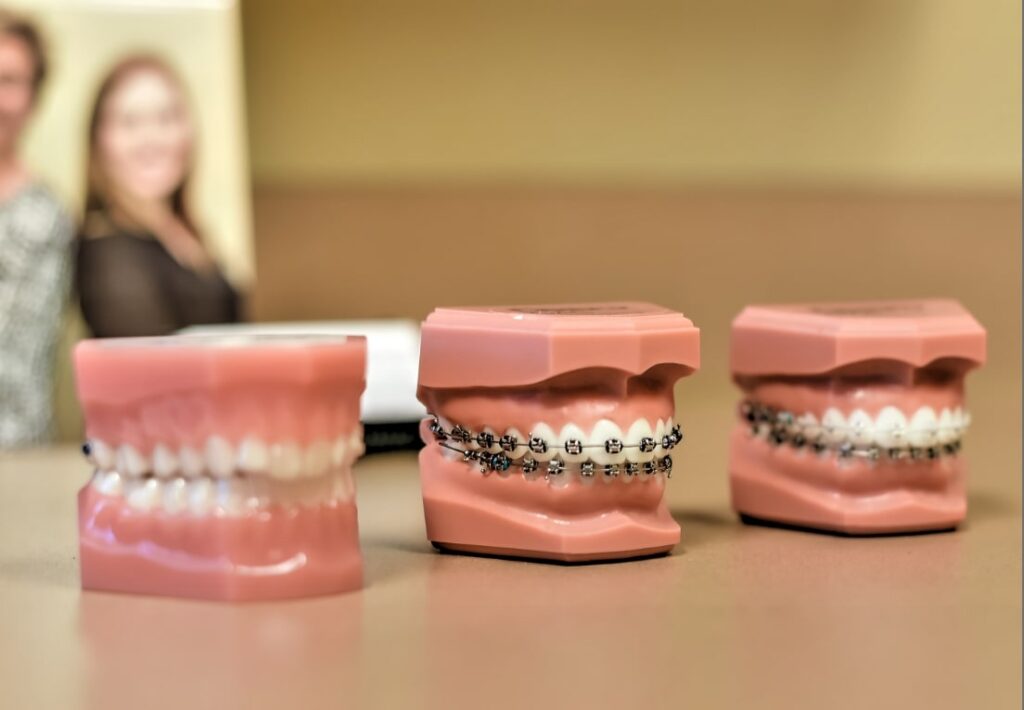How Cumming Orthodontics Addresses Common Braces and Invisalign Problems
How Cumming Orthodontics Addresses Common Braces and Invisalign Problems
Blog Article
Comprehensive Overview to Orthodontics Procedures for Dealing With Dental Misalignments
Comprehending the details of each procedure, including their mechanisms, benefits, and possible drawbacks, is essential in making notified choices concerning one's orthodontic treatment. As we browse through the detailed guide to orthodontic procedures for fixing oral imbalances, the complex information of each technique will unravel, shedding light on the path toward a harmonious and practical oral placement.
Orthodontic Procedures Overview

In addition to traditional dental braces and clear aligners, orthodontists might also advise various other interventions like headwear, palatal expanders, or retainers to attend to particular alignment problems (cumming braces). These procedures are tailored to every patient's one-of-a-kind requirements and might include a mix of treatments to attain the preferred outcomes. Routine changes and tracking are crucial components of orthodontic treatment to make sure progress gets on track and to make any needed modifications in the process. By undergoing orthodontic treatments, patients can not only attain a straighter smile however additionally enhance their total oral health and wellness and feature.
Standard Dental Braces: Just How They Work
When considering orthodontic therapies for oral misalignments, conventional dental braces stand out as a reliable method for correcting teeth positioning. Standard braces contain braces, cables, and bands that work with each other to apply continuous stress on the teeth, slowly moving them right into the preferred alignment. The braces are connected to the teeth using an unique adhesive, and the wires are threaded via the brackets. By adjusting the stress of the wires, orthodontists can regulate the direction and pressure put on each tooth, guiding them right into proper placement gradually.
As stress is applied to the teeth via the braces, the bone surrounding the teeth is improved to support the new tooth placements. Patients will need regular changes at the orthodontist's workplace to ensure the braces continue to use the proper stress for efficient teeth activity.
Undetectable Aligners: Benefits And Drawbacks
These clear, personalized trays are basically unseen when put on, making them an enticing choice for individuals looking for a much more aesthetically pleasing orthodontic treatment. People can remove the aligners prior to eating or brushing their teeth, lowering the danger of food getting stuck in the appliance and simplifying the cleaning procedure.

Surgical Orthodontic Options
Surgical treatments in orthodontics existing viable choices for attending to intricate oral imbalances that might not be effectively dealt with with traditional orthodontic therapies. While typical dental braces and unseen aligners straight from the source can fix numerous orthodontic problems, specific situations need surgical intervention to achieve optimal results. Surgical orthodontic options are generally recommended for severe malocclusions, significant jaw discrepancies, and situations where the underlying bone structure needs adjustment to accomplish appropriate placement.
One usual medical orthodontic procedure is orthognathic surgery, which involves repositioning the jaws to fix practical concerns such as difficulty chewing or talking. This surgical treatment is commonly executed in partnership with an orthodontist that dental care providers aids straighten the teeth before and after the procedure. Surgical orthodontics might likewise entail procedures to reveal impacted teeth, remove excess periodontal tissue, or improve the jawbone to develop a much more harmonious face profile.
Before considering medical orthodontic choices, clients undertake a thorough analysis to identify the need and prospective benefits of such treatments. braces. While surgical procedure may appear overwhelming, it can substantially improve both the feature and aesthetic appeals of the smile in instances where traditional orthodontic therapies fall short
Retainers and Post-Treatment Treatment

Post-treatment care includes adhering to the orthodontist's instructions carefully. This might include proper dental health practices, going to check here follow-up consultations, and putting on the retainers as prescribed. Failure to abide with post-treatment treatment instructions can lead to regression, where the teeth progressively return towards their original settings. Regular retainer wear, excellent oral hygiene, and routine oral exams are essential for maintaining the outcomes attained via orthodontic surgery and guaranteeing the long-lasting security of the dealt with oral placement.
Conclusion
In verdict, orthodontic treatments supply different choices for remedying dental imbalances. Surgical orthodontic alternatives are offered for extra serious imbalances. Overall, orthodontic procedures can effectively boost dental health and visual appearance.
As we browse through the detailed guide to orthodontic treatments for correcting oral imbalances, the complex details of each technique will certainly unfold, losing light on the path towards a unified and functional dental placement. - orthodontist
One of the most typical orthodontic therapies is the use of dental braces, which are composed of metal brackets and cords that apply gentle stress to progressively shift teeth into the wanted position.When thinking about orthodontic therapies for dental misalignments, standard dental braces stand out as a time-tested technique for dealing with teeth placing. Additionally, undetectable aligners might not be suitable for complex orthodontic problems that call for even more significant teeth movement, as they are usually advised for light to moderate cases. Retainers are customized orthodontic gadgets made to hold teeth in their corrected positions after the completion of orthodontic treatment.
Report this page